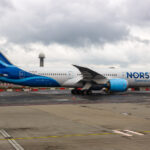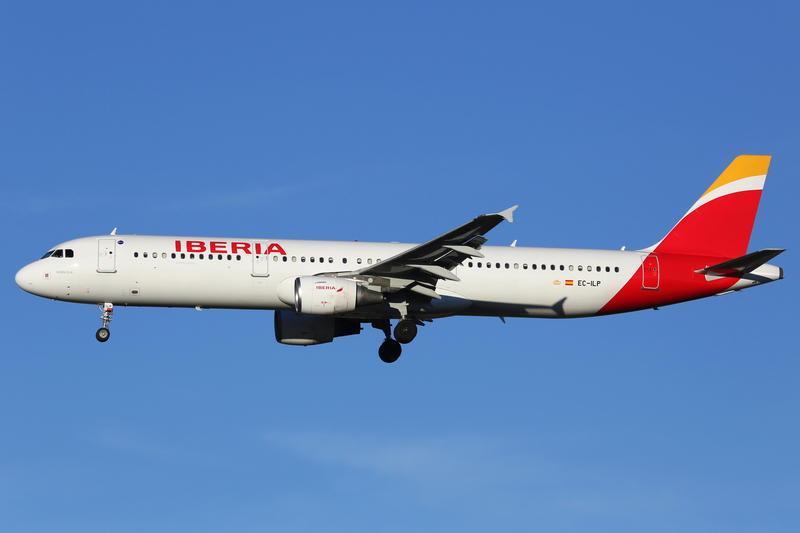Norse Atlantic’s Winter Pivot: 19% More Flights, Fewer US Routes

ID 257727948 | Airport © Boarding1now | Dreamstime.com
Norse Atlantic is heading into the winter 2025/26 season with more flights overall, but a very different focus than last year. The long-haul low-cost carrier is trimming several US routes while leaning hard into Thailand and Southeast Asia, and backing that up with a growing ACMI (wet-lease) business.
Norse’s Winter 2025/26 Schedule At A Glance
Based on schedule data for November 2025 through February 2026:
-
Norse is scheduled to operate around 1,051 flights, up from 880 in the same period last winter — a 19.4% increase.
-
That translates to roughly 57,800 additional seats across the network.
This growth comes despite Norse having already cut its US footprint by almost half earlier in 2025. The airline had reported strong financials in the second quarter, including:
-
Passenger revenue up 27% year-on-year
-
Load factor hitting 97%, with passenger numbers up 36%
Even so, the winter schedule makes clear that Norse sees more reliable opportunity eastbound to Asia and southbound to leisure sun than across the Atlantic to the US.
Big Shift To Thailand & Southeast Asia
The headline change this winter is Norse Atlantic’s push into Thailand, all operated by 338-seat Boeing 787-9 Dreamliners in all-economy, long-haul low-cost configuration.
New and expanded routes include:
From the United Kingdom
-
London Gatwick (LGW) – Bangkok Suvarnabhumi (BKK)
-
3x weekly in November (Tue, Wed, Sun)
-
5x weekly from December (Tue, Wed, Fri, Sun plus one additional frequency)
-
-
Manchester (MAN) – Bangkok (BKK)
-
Launched October 26, 2025
-
Daily through winter
-
Manchester’s first ever nonstop route to Bangkok
-
Norse estimates that over 100,000 passengers per year travel MAN–BKK via hubs in the Middle East or Asia. The airline is clearly chasing that existing one-stop leisure flow with a nonstop winter-sun option.
From Northern Europe
-
Stockholm Arlanda (ARN) – Bangkok (BKK)
-
Started October 22, 2025
-
2x weekly (Wed, Sun) initially
-
Increasing to 4x weekly in December (Wed, Fri, Sat, Sun)
-
-
Stockholm Arlanda (ARN) – Phuket (HKT)
-
Starts December 4, 2025
-
1x weekly (Thu)
-
-
Oslo (OSL) – Phuket (HKT)
-
Starts December 8, 2025
-
1x weekly (Mon)
-
This strategy lines up neatly with demand trends. Between January and September 2025, Thailand welcomed:
-
Around 758,000 visitors from the UK (up 13.7% year-on-year)
-
Around 145,000 visitors from Sweden by mid-October (up 8.6% year-on-year)
Forward bookings from the UK for October 2025–March 2026 are also reported to be 10–13% higher than last year, reinforcing Thailand’s status as a winter-sun powerhouse for both the UK and Scandinavia.
Retreat Across The Atlantic: Just 3 US Routes Left
While growth is strong to the east, Norse Atlantic has cut back sharply in the US for the winter season. The airline has ended or suspended multiple transatlantic routes, including:
-
London Gatwick (LGW) – Miami (MIA)
-
London Gatwick (LGW) – Las Vegas (LAS)
-
Oslo (OSL) – Miami (MIA)
-
Berlin Brandenburg (BER) – New York JFK (JFK)
-
Paris Charles de Gaulle (CDG) – New York JFK (JFK)
The CDG–JFK route ended on October 17, 2025, after roughly three weekly frequencies and just over 1,000 seats per week. The BER–JFK service, launched in August 2022, is also being withdrawn despite strong late-2024 load factors of 86–89%, which were heavily supported by lower capacity and aggressive pricing.
The London–Miami story is even more telling. Norse reportedly saw:
-
Average loads of around 69% from September 2023 to November 2024
-
Recent months above 90%, even reaching 93% in January 2025
But the route sits in one of the most competitive long-haul leisure corridors on Earth, with British Airways, Virgin Atlantic, and American Airlines offering high-frequency, joint-venture, and premium-heavy services. Strong headline loads don’t help if yields are crushed by competition.
For winter 2025/26, Norse’s US network shrinks to just three routes:
| Route | Winter Frequency (approx.) |
|---|---|
| London Gatwick (LGW) – New York JFK (JFK) | 4–6x weekly |
| London Gatwick (LGW) – Orlando (MCO) | 3–4x weekly |
| Rome Fiumicino (FCO) – New York JFK (JFK) | 6x weekly (no Wed) through Jan 11, 2026 |
It’s a sharp pivot away from the original transatlantic-heavy ambition, at least during the winter low-yield season.
South Africa & ACMI: The Other Pillars Of The Strategy
Thailand isn’t the only growth story. Norse is also seeing solid demand on its London Gatwick – Cape Town (CPT) route:
-
Capacity is being nudged up to as many as six weekly flights this winter.
-
All services continue to use Boeing 787-9s.
At the same time, Norse is leaning harder into its role as an ACMI (wet-lease) provider, using spare 787 capacity to secure more stable, contract-based income. That model de-risks the airline from:
-
Seasonal swings in leisure demand
-
Fare wars on crowded trunk routes
-
High marketing and distribution costs for new city pairs
One of the most notable deals so far:
-
IndiGo, India’s largest airline, will wet-lease six Norse Boeing 787-9s by the end of the year — around half of Norse’s active fleet.
Those aircraft will likely be flying dense, high-demand routes for IndiGo while Norse collects predictable lease revenue, regardless of passenger demand or seasonal weakness on its own network.
Why Norse’s Pivot Makes Sense
Long-haul low-cost has always been a high-risk, thin-margin game. The last few years have shown that even with full planes, profitability is hardly guaranteed. Norse’s latest schedule changes reflect a more cautious and tactical approach:
-
Chasing strong winter-sun demand to Thailand, where point-to-point leisure flows are robust.
-
Avoiding brutal head-to-head competition where legacy joint-ventures dominate (like London–Miami or Paris–New York).
-
Using wet-leases and ACMI to smooth out seasonality and protect cash flow.
-
Leaning on the 787-9’s economics, but only where fares can support the costs.
Norse is still growing — nearly 20% more flights this winter — but that growth is no longer centered on betting big across the Atlantic. Instead, the airline is acting more like a hybrid of scheduled carrier and capacity provider, adjusting quickly to where the numbers genuinely work.
Bottom line
Norse Atlantic’s winter 2025/26 schedule may look surprising at first glance: more flights overall, but fewer US routes, and a big push into Thailand and Cape Town. Under the surface, though, it’s a logical response to the realities of long-haul low-cost flying.
By shifting capacity to Bangkok, Phuket, and Cape Town, trimming loss-making US routes, and leasing out up to half of its 787-9 fleet, Norse is clearly prioritizing sustainability and cash flow over raw network size. Whether this more disciplined model finally cracks the long-haul low-cost puzzle is exactly what this winter will begin to reveal.




